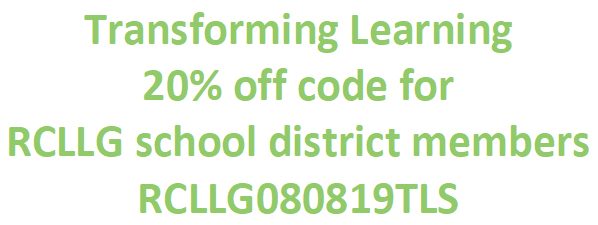By PTI
HOW ELECTED LEADERS CAN LEAD THE CONVERSATION
The need to expand public accessibility to the internet—for work, education, connecting to government and health care providers—has become all too apparent over the last two years. Access to high-speed, reliable, and cost-efficient internet access is now an essential part of life and is critical for advancing the quality of life of our communities.
Unfortunately, many in our society have limited or no choices for internet access, lack access to computers, or do not have the skills necessary to utilize internet services. All these factors negatively impact education, access to health-related information, employment, and civic participation.
As we become more dependent on internet services, it is important for elected leaders at the local level to move the discussion from expanding broadband infrastructure to raising awareness of the digital equity and digital inclusion needs of the public.
The National Digital Inclusion Alliance, a nonprofit organization that advocates for national access to broadband, provides these definitions:
“Digital equity ensures all individuals and communities have the information technology capacity needed for full participation in our society, democracy and economy. Digital equity is necessary for civic and cultural participation, employment, lifelong learning, and access to essential services.”
“Digital inclusion is the activities necessary to ensure that all individuals and communities, including the most disadvantaged, have access to, and use of, information and communication technologies.”
Elected Leaders: Starting the Conversation
To help elected leaders begin the dialog on digital equity and digital inclusion, it is important to distinguish between the digital divide in rural and urban America.
In rural areas, the technical and cost hurdles to deploying broadband often make it prohibitive. In urban areas the issue is more often about affordability.
It is also important to recognize that the approach of one size fits all does not work. The variables of affordability and availability dictate the use of multiple solutions.
If your community is lacking affordable or accessible internet, consider implementing free wi-fi in public-run and owned spaces that can include areas outside of schools, libraries and community facilities until you can identify longer-term solutions. Your organization may have to utilize its own resources or you might identify an outside organization or commercial service provider to work with to provide better, temporary wireless coverage until you can identify a partner to build-out your digital infrastructure to meet your community’s long-term needs.
There are new federal funding sources available through the Infrastructure Investment and Jobs Act that your organization will want to explore. Signed into law in November 2021, it provides over $60 billion in federal grants to address broadband equity, access and development ($42.5 billion) and $14.2 billion to modify and extend the Emergency Broadband Benefit Program (EBB Program) to a longer-term broadband affordability program called the Affordable Connectivity Program (more on this below).
Public Technology Institute (PTI) worked with the City of Boston, Massachusetts—a leader in municipal broadband—to identify some of Boston’s tenets of equity and inclusion and share how they may be applied in your city or county:
- How can we enable consumer choice in the residential and business broadband markets?
- What can we do to expand the availability of high-speed internet in public places, schools, community centers, and libraries?
- What approaches can we take to facilitate ease of access to up-to-date digital tools for the public?
- How do we promote the acquisition of digital skills that the public needs to thrive, innovate, and create?
Elected Leaders Help to Engage Partners
Any strategy or action plan must include the coordinated involvement of multiple stakeholders and partnerships that will benefit all participants. In effect, you are building a coalition of like-minded individuals and organizations to advance digital equity and digital inclusion and close the digital divide. Elected leaders can facilitate discussions—whether in-person or virtual—to gauge their feedback on broadband service offerings and future needs.
It is also important for elected leaders to share in digital equity and digital inclusion discussions with neighboring jurisdictions and on the national level—to share lessons learned and advocate for ideas and best practices from around the country. Several local governments—Portland, Oregon; Bloomington, Indiana; Kansas City, Missouri; and Seattle, Washington—have developed action plans that can serve as a resource for your community’s efforts. Baltimore, Maryland has created the position of digital equity coordinator with staff expertise in wi-fi deployment, fiber engineering, operations, and tech support to help guide that city’s efforts.
There are also grant programs and public-private partnership opportunities that provide digital support to communities. An initiative in Philadelphia, Pennsylvania provides Digital Navigators who are available by phone and email at six organizations to help residents access and use technology and the internet. They provide support by helping individuals find and apply for affordable internet connectivity, obtain low-cost or free computers, get support with simple online tasks, and link to online digital literacy training.
How the IT Organization Can Help
As elected leaders begin the conversation, the IT organization might consider conducting a study or community assessment of broadband digital equity to better understand internet accessibility, quality, affordability and identify opportunities to address digital equity. For example, US Census data on broadband provides only us a cursory view of the challenge. Local leaders need to understand who is not connected to the Internet and why: Is it cost, fear, frustration, lack of equipment, or access?
Understanding these reasons can help lead to the development of an action plan for your community. Again, lessons learned from the city of Boston’s approach and goals and how the IT organization can assist:
- Help policymakers build on current broadband and digital equity success:
- Engage with internet service providers to gather data on current broadband environment.
- Summarize and evaluate existing programs focused on achieving digital equity.
- Make recommendations for expansion or creation of new digital equity programs.
- Develop a multifaceted approach to assist leaders in understanding:
- Current availability of broadband services.
- Existing programs focused on achieving digital equity.
- Level of investment required to directly impact the broadband environment.
- Some of the technical requirements that have an impact on services. For example, if areas of your community do not have the standard of 25/3 Mbps (megabits per second; 25 Mbps download, 3 Mbps upload) then you will want to identify funding and partnership opportunities to reach what some consider to be the reasonable minimum standard for broadband.
The End Game
As your community continues its journey into broadband and digital inclusion, be sure to explore options with regards to financing your approach: What are the costs associated with your initiatives and what external funds and resources can you tap to offset your costs? Be sure to separate out projected costs such as infrastructure, ongoing maintenance, training (if applicable), grant funding, etc. Remember, infrastructure costs, if done correctly, have a long lifecycle. Also to be considered is the potential for generating revenue—user fees, subscriptions, advertising, private and grants, and special funds—to offset expenses.
Elected leaders play an integral part in local efforts to close—not just bridge—the digital divide. Being champions of digital equity and digital inclusion for residents and neighborhoods lacking internet access, skills and tools will shift the perception of secure high speed, reliable and cost-effective broadband access from “nice to have” to “must have.”
Affordable Connectivity Program
On December 31, 2021, the FCC launched the Affordable Connectivity Program (ACP). This longer-term program was created by Congress in the Infrastructure and Jobs Act and replaces the Emergency Broadband Benefit program. This investment in broadband affordability will help ensure households can afford the internet connections they need for work, school, health care and more and is a program that you might promote to your community.
The ACP provides a discount of up to $30 per month toward internet service for eligible households and up to $75 per month for households on qualifying Tribal lands. Eligible households can also receive a one-time discount of up to $100 to purchase a laptop, desktop computer, or tablet from participating providers if they contribute more than $10 and less than $50 toward the purchase price.
For more information, please see https://www.fcc.gov/acp.
Additional Resources
U.S. Department of Commerce, National Telecommunications and Information Administration (Much of the federal grant programming will be managed through NTIA)
https://www.ntia.doc.gov/
National League of Cities, Information Technology and Communications Federal Advocacy Committee
https://www.nlc.org
National Association of Telecommunication Officers and Advisers (NATOA)
https://www.natoa.org













